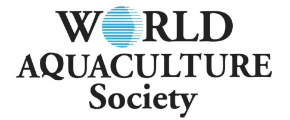EFFECTS OF GREENWATER, MARINE Bacillus subtilis HS1 PROBIOTIC AND SYNBIOTIC ENRICHED ARTEMIA AND ROTIFERS ON THE EUROPEAN SEA BASS LARVAL FATTY ACIDS AND AMINO ACIDS IN ALEXANDRIA, EGYPT
Egypt, the 9th world aquaculture producer is also the 1st Mediterranean Sea, Arab and African aquaculture producer (FAO, 2012). Egypt marine aquaculture still depending on fry collected from natural resources (63 million fry) although Egypt had 6 hatcheries producing 15.8 million fry, only 1.6 million were sea bass fry (GAFRD, 2011). Not enough or misbalanced or low quality live feeds affecting marine hatcheries larval productivity and quality (Salem et al., 2012 and Salem, 2014).
The present study conducted in Fish Reproduction & Spawning Lab., NIOF, Alexandria, Egypt. European sea bass Dicentrarchus labrax newly hatched larvae from 8 dph to the 40 dph was reared according to (Süzer et al., 2011). The treatments were green water using Nanochlorapsis salina algae (G), greenwater plus marine Bacillus subtilis HS1 Probiotic bacteria (G+MP) and greenwater plus synbiotic (G+S) in 30 l tanks in duplicates.The larval 6 tanks was green water with N. salina Algal count not less than 300000 cell/ml. The experimental treatments using green water using N. salina as positive control (G), green water plus marine probiotic bacteria (G+MP) and green water plus synbiotic (G+S).4 hours enriched rotifers Brachionus plicatilis started from the 7th dph until the 14th dph, the beginning of cofeeding on 6 hours enriched Artemia fransiscana (GSL) nauplii started and rotifers reduction started in the 18th dph and stopped from the 20th dph and artemia napulii fed alone until the 25th dph, 25dph larvae started feeding on artemia metanauplii and cofeeding with Orange® P 1/2 Small microdiets with 100-200 micron to 35dph. From the 35th dph artemia metanapulii stopped and larvae fed only on O.range® until the end of the experiment (the 40th dph). The biotechnical larvae rearing including siphon water exchange rate using hose covered with 55- 60 micron plankton net was done once/ day to avoid larvae disturbance using rates of 10% from the 1st week to the end of the experiment. Larvae samples were randomly collected from all treatments tanks and presererved in frozen at temperature of -20º C until complete methyleestrfication using the Folch method as modified by Bligh and Dyer, (1959). Fatty acid methyl esters were analyzed using gas liquid chromatography (HP-6890 gas-liquid chromatography) according to Radwan, (1978) and amino acids analyzing using amino acids analyzer model: Dionex ICS 3000 according to Product manual for Dionex Amino Analyzer and AminoPac PA10. Document No. 031481-12 according to (Dionex Coroporation, 2006) for samples preparation and conditions for accurate amino acids analysis.
The results of Fatty acids composition of larval total lipids presented as % of the 40dph early weaned Seabass larvae showed that the n-6 HUFA as total n-6 HUFA, LA C18:2 and ARA C20:4 showed no significant differences and the highest achieved by (G+S) and Docosadienoic acid C22:2 showed no significant differences and the highest achieved by (G). The n-3 HUFA as total n-3 HUFA and Alpha Linolenic acid C18:3 FA showed no significant differences and the highest achieved by (G+S), EPA C20:5, showed no significant differences and the highest indicated by (G+MP), DHA C22:6 showed no significant differences and the highest achieved by (G). The n-6/n-3 ratio of the early weaned larvae showed the highest significant (P < 0.05) achieved by (G+S), the DHA/EPA ratio showed the highest significant resulted by (G), the EPA/DHA ratio showed no significant differences and the highest achieved by (G+MP), the ARA/EPA and the ARA/EPA/DHA ratios showed the highest significant (P < 0.05) exhibited by (G+S).
Amino acids composition of the 40dph early weaned Seabass larvae presented as %. The EAA as total EAA, Histidine, Arginine, Phenyl Alanine, Methionine and isoleucine showed no significant differences and the highest achieved by (G+MP). Lysine and Valine showed no significant differences and the highest indicated by (G). Threonine showed no significant differences and the highest achieved by (G+S). and Leucine showed the highest significant (P < 0.05) indicated by (G+S). The NEAA as total NEAA, Serine, Aspartic acid, Cystine and Glycine showed no significant differences and the highest achieved by (G). Proline showed the highest significant (P < 0.05) resulted by (G+MP). Alanine showed no significant differences and the highest indicated by (G+MP) and Glumatic acid showed the highest significant (P < 0.05) achieved by (G+S).













